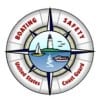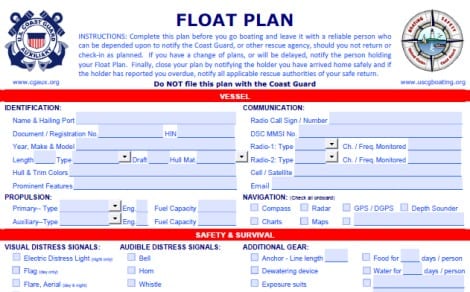 By Bob Currie, Vessel Examiner
By Bob Currie, Vessel Examiner
United States Coast Guard Auxiliary Flotilla 081-06-08
USCG Auxiliary Flotilla 081-06-08 is based at Coast Guard Station Galveston. Preparation is one of the main keys to boating safety, and when things do go wrong on the water, filing a float plan with one or more people can mean the difference between being rescued and being lost at sea. An old friend, Al, would hang a Gone Fishin’ sign on the door of his shop. While this wasn’t the same as filing a proper float plan with his wife, it at least gave rescuers an idea of where to start looking if he came up missing. But keep in mind that 71% of the earth’s surface is covered with water. Al needed to be a little more specific if he wanted to be rescued.
As mentioned in another column, the best float plan I have ever seen can be found as part of the U.S. Coast Guard smart phone app. It not only asks specific questions needed to help rescuers find you, it will email the completed float plan to up to two contacts. Float plans completed using the Coast Guard app can be saved and used as many times as you wish, and can be edited to fit the current situation, including date and time, itinerary, and persons on board.
Anyone on the boat can file a plan. You do not have to be the Skipper. Even Gilligan, the Howells, Ginger, the Professor and Mary Ann could have filed a float plan. If you choose to file a float plan using another method, the following information should be provided to at least one contact:
1. Your boat’s identification (registration number, length, type, type of propulsion)
2. Your vehicle information (make, model, license plate number, launch location)
3. Safety gear aboard (Life jackets, visual distress signals, food and water)
4. Persons on board (name, age, gender, address, phone number)
5. Itinerary
a. Where will you depart from and what time will you depart
b. Where are you going to and what time do you plan to arrive
c. Any waypoints along the way
d. Check in time (always have a check in time and don’t forget to call)
The Coast Guard Float Plan app allows you to upload a picture of your boat. I stored a picture of my boat hooked up to my truck. The app also has a comprehensive Boating Emergency Guide™ that tells your contacts exactly how to proceed should you not check in by the time given in your float plan. I will email anyone who requests it an example of the float plan I file when I take my boat out on the water. A float plan for a 10 foot kayak will be as effective as one filed for a 48-foot cruiser. Our Station Galveston Search and Rescue team has searched for many overdue kayakers. All boats are important to us.
For more information on boating safety, please visit the Official Website of the U.S. Coast Guard’s Boating Safety Division at www.uscgboating.org.
Questions about the U.S. Coast Guard Auxiliary or our free Vessel Safety Check program may be directed to me at [email protected]. SAFE BOATING!
[8-14-2017]


 Posted in
Posted in 























